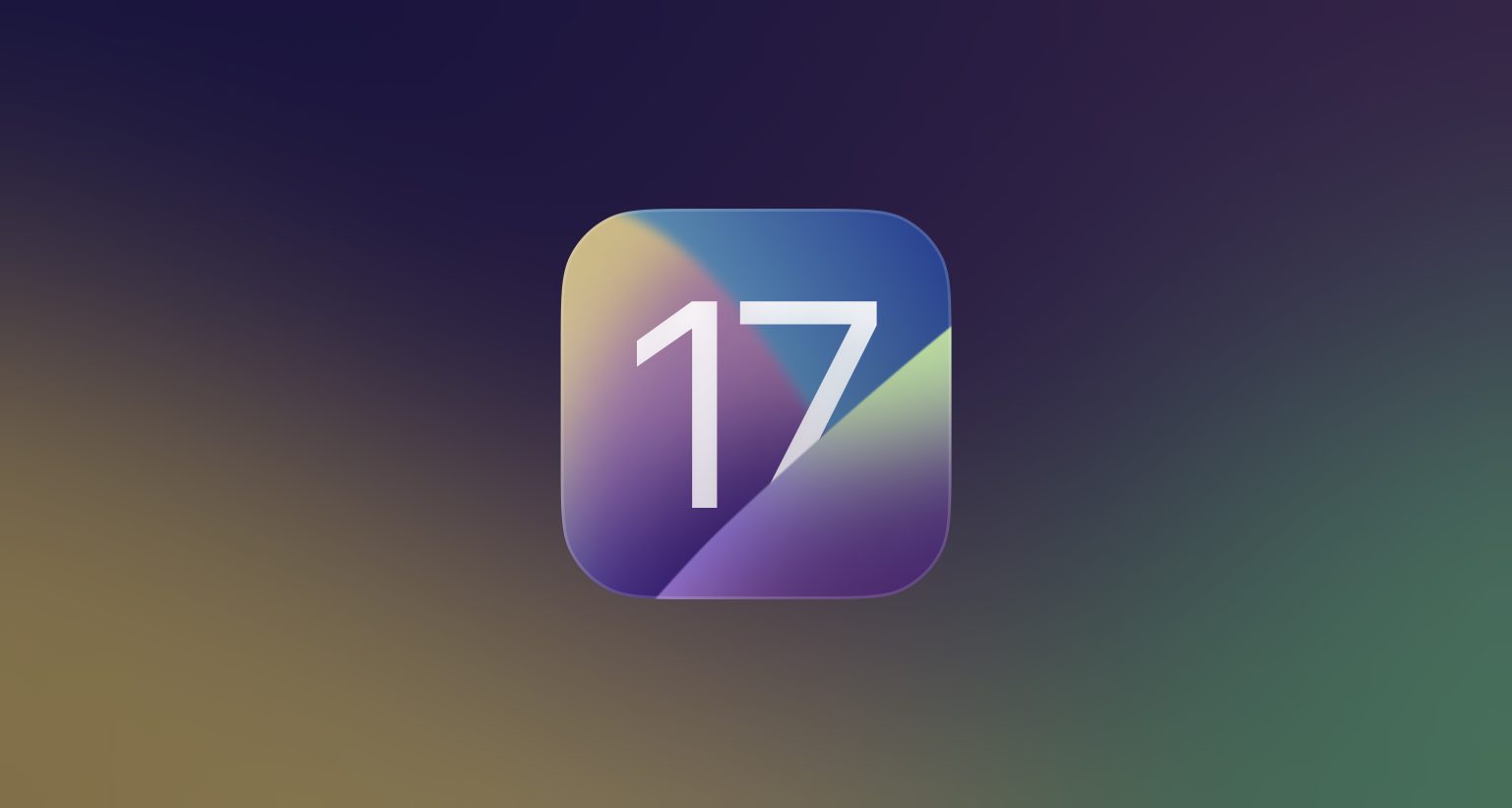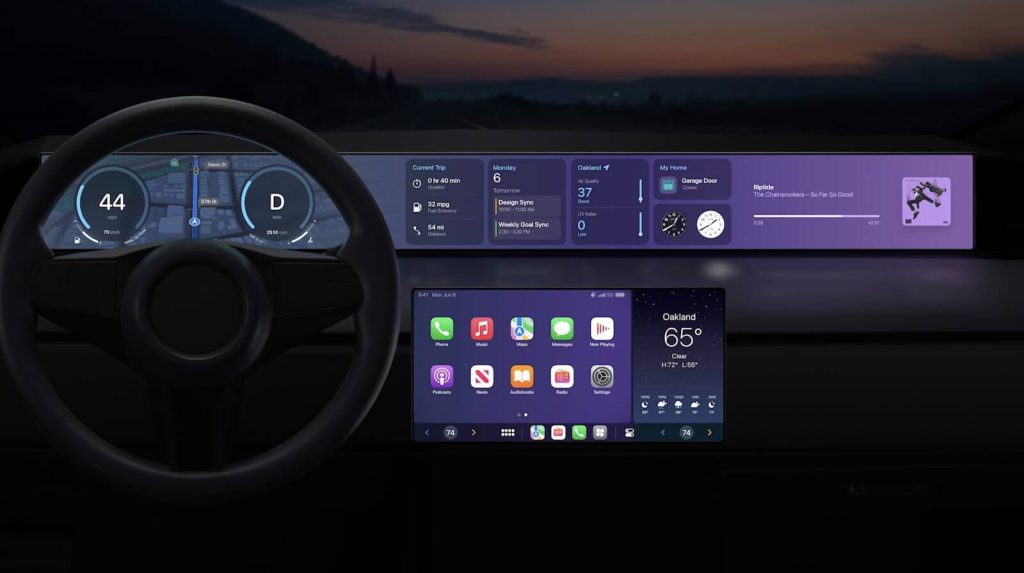Apple is expected to debut iOS 17, the next major version of its iPhone operating system, at WWDC 2023, which will be held from Monday, June 5, to Friday, June 9, with the main keynote event on Monday at Apple Park. Here is what to expect from iOS 17 -and iPadOS 17- ahead of Apple’s big event.
At a glance
While it is near impossible to confirm exactly which features or changes will be included in iOS 17, anonymous tipsters, including Twitter user @analyst941 and other reputable leakers, have offered clues on what to anticipate from iOS 17 ahead of WWDC’23. The alleged features will consist of a complete overhaul of Control Center, support for app sideloading, interactive widgets, robust improvements to Spotlight Search, new accessibility modes, and more.
Extended support for older iPhone and iPad models is also a rumored focus of iOS 17, with performance and efficiency improvements paving the way for long-term software stability. While iOS 17 is not expected to feature any monumental changes or breakthrough features, the new update could deliver several “nice to have” features that users have been asking to have for years, according to Chief Correspondent for Bloomberg, Mark Gurman:

Discover new horizons, always connected with eSIM
Travel the world stress and hassle-free with the best eSIM service available. Enjoy unlimited data, 5G speeds, and global coverage for affordable prices with Holafly. And, enjoy an exclusive 5% discount.
App sideloading and third-party browser support
Europe’s Digital Markets Act (DMA) could see iOS 17 introduce support for third-party web browsers not tied down to Apple’s WebKit engine limitations, including Chrome, Firefox, Opera, and Microsoft Edge. Further European legislation requires Apple to allow sideloading for apps starting in 2024. iOS 17 could lay the groundwork for these changes offering foundational software implementation strategies for alternative app marketplaces beyond the built-in App Store app.

Bloomberg’s Mark Gurman appeared on the MacRumors Show podcast to share that app sideloading and third-party app marketplaces will be available only in European countries to comply with legislation. Interestingly, according to a survey, only 14% of developers say they would abandon the App Store for a third-party alternative if given a choice.
Expanded Dynamic Island capabilities
With this year’s standard iPhone 15 models expected to gain the Dynamic Island, Apple is reportedly working on allowing the hybrid hardware/software system to “do a lot more,” according to renowned Twitter leaker @analyst941. While this open-ended prediction could indicate several upgrades for the Dynamic Island in iOS 17, including the ability to display notifications or access Siri, concept artist Kostya Konovalov has offered a look at what Dynamic Island could look like for Messages app notifications via Bēhance:
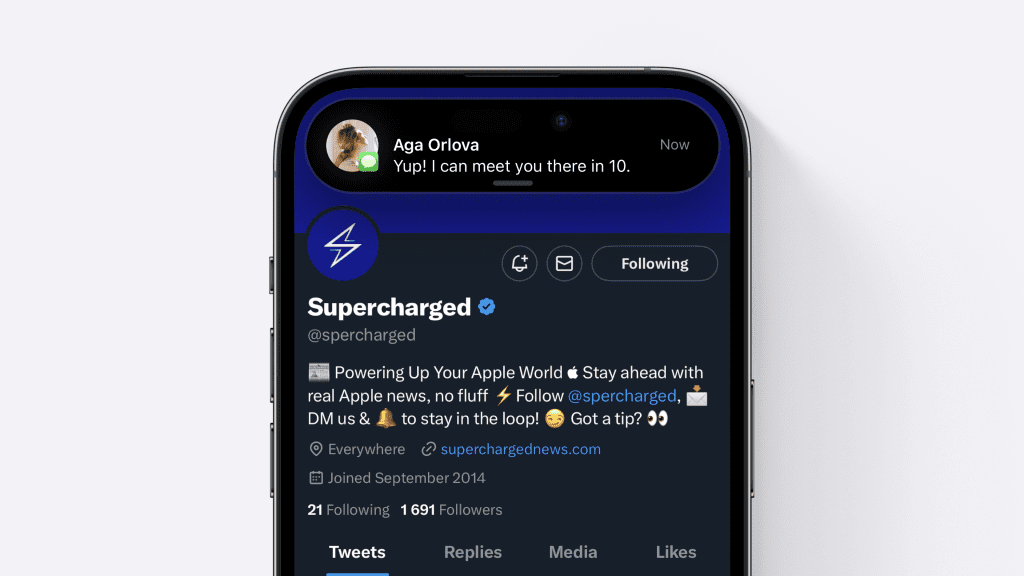
According to the leak, Apple’s marketing department has pressured the development team to add more features to the Dynamic Island to bolster sales of the iPhone 15 when it launches running iOS 17 later this year.
Advanced accessibility mode
Apple’s currently unreleased “Custom Accessibility Mode” was initially pegged to release with iOS 16.2 when tech reporting firm 9to5Mac uncovered the alternative interface mode as far back as November 2022. Now many believe Custom Accessibility Mode, which allows younger and older users to better navigate iOS with simplified controls, larger button toggles, and more, could debut as part of iOS 17.
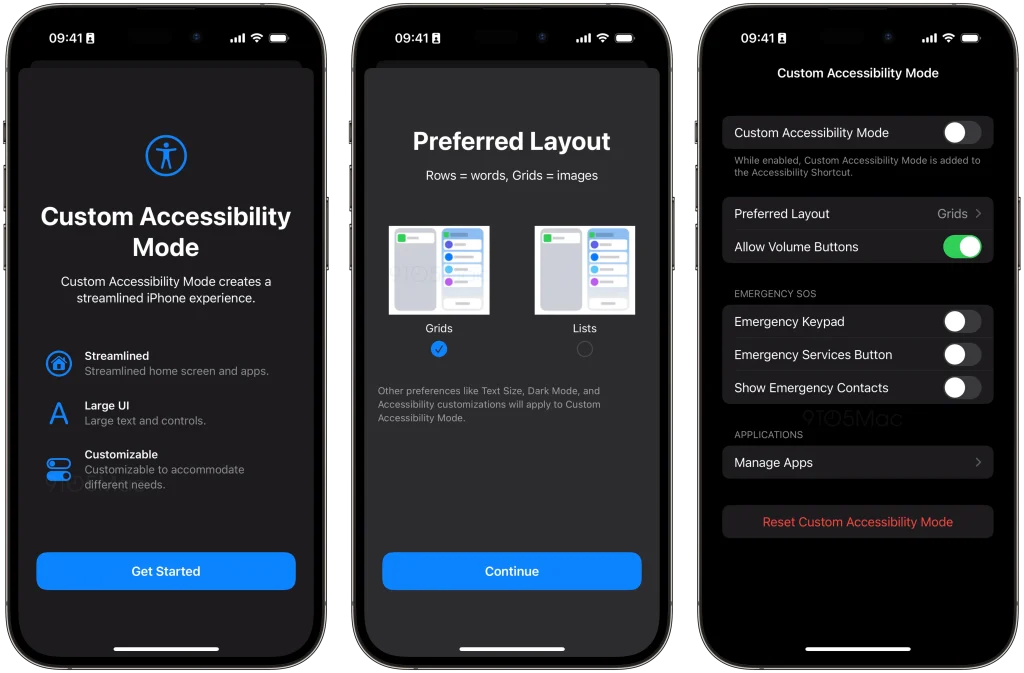
Digital journaling app
According to a recent report, Apple is rumored to be working on a new built-in journaling app for iPhone and iPad users looking to boost their mental well-being. The exclusive report coming from The Wall Street Journal suggests that Apple’s journaling app code-named “Jurassic” could be announced at WWDC as a stock app included with iOS 17.
The app is rumored to utilize a privacy-centric daily activity tracking system that will operate on-device to keep user data safe. The system will allegedly keep track of who users come into contact with, the places they visit, and who they text or call, allowing them to recognize when they fall out of routine and why. A report from Bloomberg’s Mark Gurman suggests that the journaling app is less likely to be marketed as a mental health feature and more likely to be framed as an “extension of the company’s Find My service.”
Refreshed CarPlay interface
iOS 17 will likely be the operating system that delivers the entirely revamped CarPlay experience that Apple first previewed nearly a year ago at WWDC 2022. This is because the new CarPlay integration, complete with multi-screen toggles for several vehicle instruments, including those that control climate and radio, is expected to debut in late 2023, according to Apple. This would align with Apple’s typical strategy of releasing major platform updates to the public later in the year alongside new flagship iPhone models.
Minor improvements to core features
Twitter leaker @analyst941 has shared, albeit in minor detail, that many staple iOS features, including Control Center and Spotlight Search, will receive notable updates with iOS 17. Control Center will adopt significant user interface changes and new customization features. Spotlight Search has also been “heavily improved” with additional Focus Mode options and configurable settings for notifications becoming available with iOS 17. The Health app is rumored to include a refreshed interface with a new “favorites” option. The Wallet app will receive CarKey improvements and other features to reduce friction concerning device integration with vehicles.
With Apple allegedly optimizing a new operating system based on the same framework as iOS dubbed “xrOS” for its rumored “Reality Pro” AR/VR headset ahead of WWDC’23, the same Twitter leaker expects iOS 17 to include “an absolute behemoth of ARKit APIs/frameworks.”

App Library, Music app, and Lock Screen customizations
A Weibo post from the same leaker who correctly predicted the arrival of a yellow color option for the iPhone 14 and iPhone 14 Plus has provided many details regarding what to expect from the new Lock Screen, App Library, and the revamped Music app interface in iOS 17.
Users can allegedly adjust the font size of elements on their Lock Screen and share the Lock Screen layouts they configure with other iPhone users in iOS 17. Flashlight brightness will likely be more adjustable utilizing a method similar to the existing volume slider.
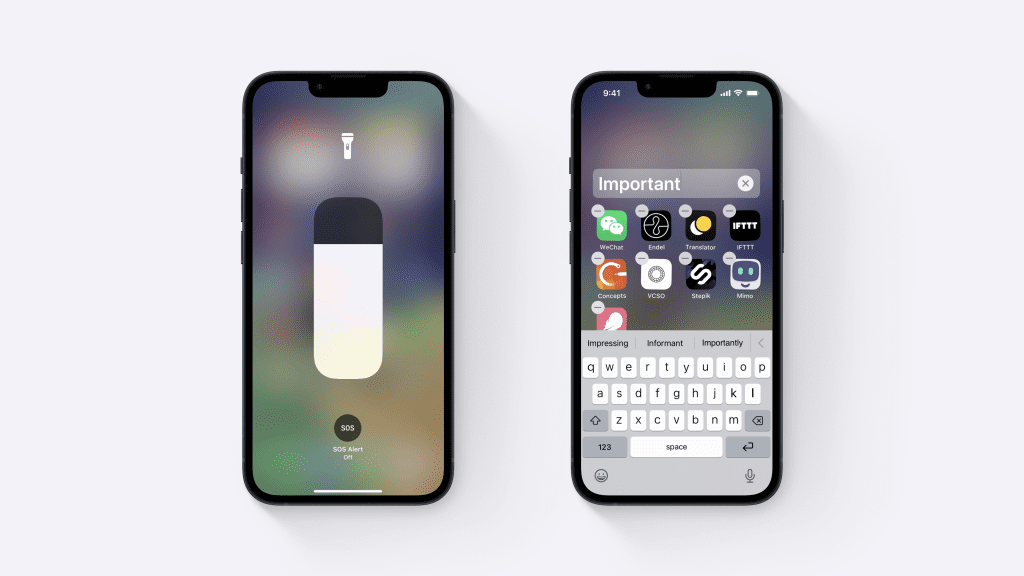
iOS 17’s Music app will acquire a more simplified and intuitive interface with the ability to toggle song lyrics from the Lock Screen also, according to the report. Additionally, folders in App Library will gain the option to be manually renamed.
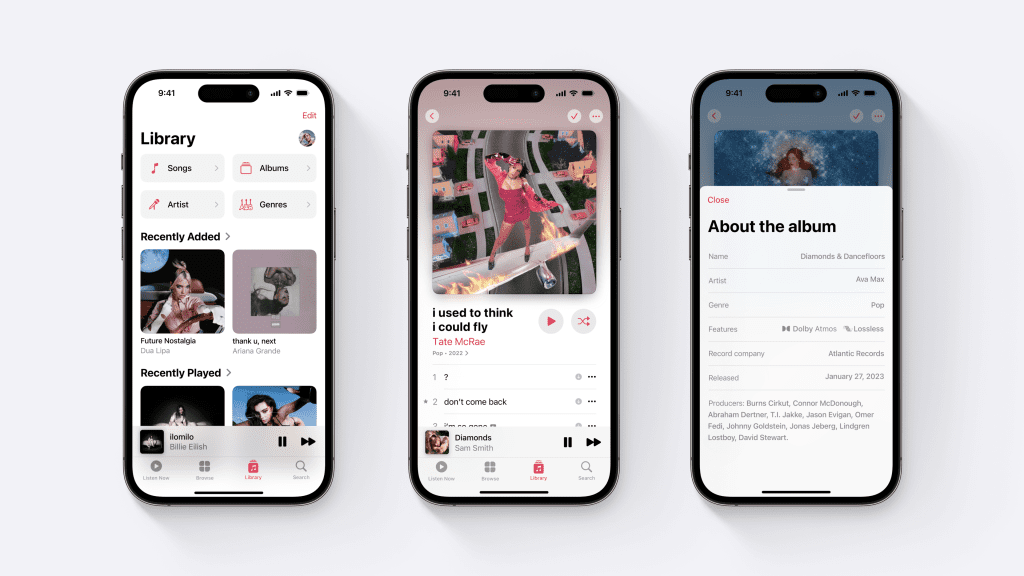
Updated Health app for iPad
According to a report from Bloomberg’s Mark Gurman, the Health app is expected to debut on the iPad for the first time with iPadOS 17 since its original release in 2014 with iOS 8. The new Health app will allow users to view large-scale representations of their health data, including complete ECG readings on the iPad. A move that Apple hopes will popularize the Health app in a healthcare market already saturated with iPads.
The same report also details Apple’s long-term plans to add an emotion-tracking mechanism and tools to manage eyesight conditions such as nearsightedness in the Health app. The emotion tracking system will allow users to manually “log their mood, answer questions about their day, and compare the results over time,” according to Gurman.
Device compatibility
Apple is notorious for offering longstanding software support for its older iPhone and iPad models, though rumors surrounding iOS 17’s compatibility have remained murky. One Twitter leaker with an accurate track record, @Fame_G_Monster, has suggested that iOS 17 will remove support for 2017’s iPhone X, iPhone 8, and iPhone 8 Plus, adding that iPadOS 17 will allegedly lack support for 2016’s 9.7-inch iPad Pro, 2015’s 12.9-inch iPad Pro (1st Generation), and 2017’s iPad (5th Generation). Another reputable firm iPhoneSoft has corroborated this report.
Another well-known leaker who remains anonymous stated in a MacRumors forum post that iOS 17 will support all iPhone and iPad models currently supported by iOS 16, including devices powered by “all A11 chipsets”. This would indicate that iOS 17 and iPadOS 17 will support the following devices spanning eight years of software support for iPhone and iPad models released as far back as 2015:
iOS 17
- Released in 2022: iPhone 14, iPhone 14 Plus, iPhone 14 Pro, and iPhone 14 Pro Max.
- Released in 2021: iPhone 13, iPhone 13 mini, iPhone 13 Pro, and iPhone 13 Pro Max.
- Released in 2020: iPhone 12, iPhone 12 mini, iPhone 12 Pro, and iPhone 12 Pro Max.
- Released in 2019: iPhone 11, iPhone 11 Pro, and iPhone 11 Pro Max.
- Released in 2018: iPhone XS, iPhone XS Max, and iPhone XR.
- Released in 2017: iPhone X, iPhone 8, and iPhone 8 Plus.
iPadOS 17
All models released from 2015-2023:
- iPad Pro (all models)
- iPad Air (3rd Generation and later)
- iPad (5th Generation and later)
- iPad mini (5th Generation and later)

Developer-only beta access
All developer betas following the iOS 16.4 beta, including iOS 17, now require a paid Apple Developer account. This limitation will eliminate the ability to download and install the iOS 17 developer beta using a configuration profile. Non-developers will still have the option to test iOS 17 by accessing public beta versions, but those looking to grab the latest features will need to pay the $99/year Apple developer account fee.
Expansion of unwanted location tracking alerts
Apple and Google recently announced a new industry standard to help combat illicit location tracking via Bluetooth-enabled devices like AirTags. The standard introduces a new cross-platform mechanism scheduled for commercial deployment by the end of this year on iOS and Android platforms. This roadmap would align with the public release of iOS 17 expected this fall. Other companies, including Samsung, Tile, Chipolo, eufy Security, and Pebblebee, support the joint draft.
iMessage Contact Keys
iMessage Contact Keys are a new cryptographic security feature Apple previewed in late 2022. Apple says the feature is meant for users facing “extraordinary digital threats,” ensuring that only intended recipients can decrypt messages from verified recipients. When users enable iMessage Contact Key Verification, they will be prompted to share their public key with their contacts. When a contact receives this public key, they can use it to encrypt messages that are sent to the user. This ensures that only the user can decrypt these messages, even if someone else intercepts them.
Apple categorizes the features as an “extreme, optional level of security for users such as journalists, human rights activists, and diplomats,” stating further that iMessage Contact Key Verification will be available globally in 2023. With the official debut of the iOS 17 beta at WWDC 2023 just around the corner, Apple could opt to enable iMessage Contact Key Verification alongside the public release of iOS 17 expected later this year.
Conclusion
While there is much speculation regarding what new features will be included in iOS 17, the most notable rumors include an overhaul of Control Center, support for app sideloading in Europe, interactive widgets, robust improvements to Spotlight Search, a new accessibility mode, and more. Control Center received its last major design overhaul with iOS 11 in 2017, which allowed users to access all controls on one page. The rise of AI chatbots such as OpenAI’s ChatGPT and Google’s Bard has many users wondering if Apple will enter the AI race by updating its built-in Siri voice assistant or transforming Spotlight Search into an AI-powered search engine.
While it is impossible to know what will be included in iOS 17 until Apple officially announces it, the rumors and speculation are promising. We will update this article with any subsequent information we uncover on iOS 17 leading up to WWDC’23.
This article was updated with additional information on May 3 by Brahm Shank.


